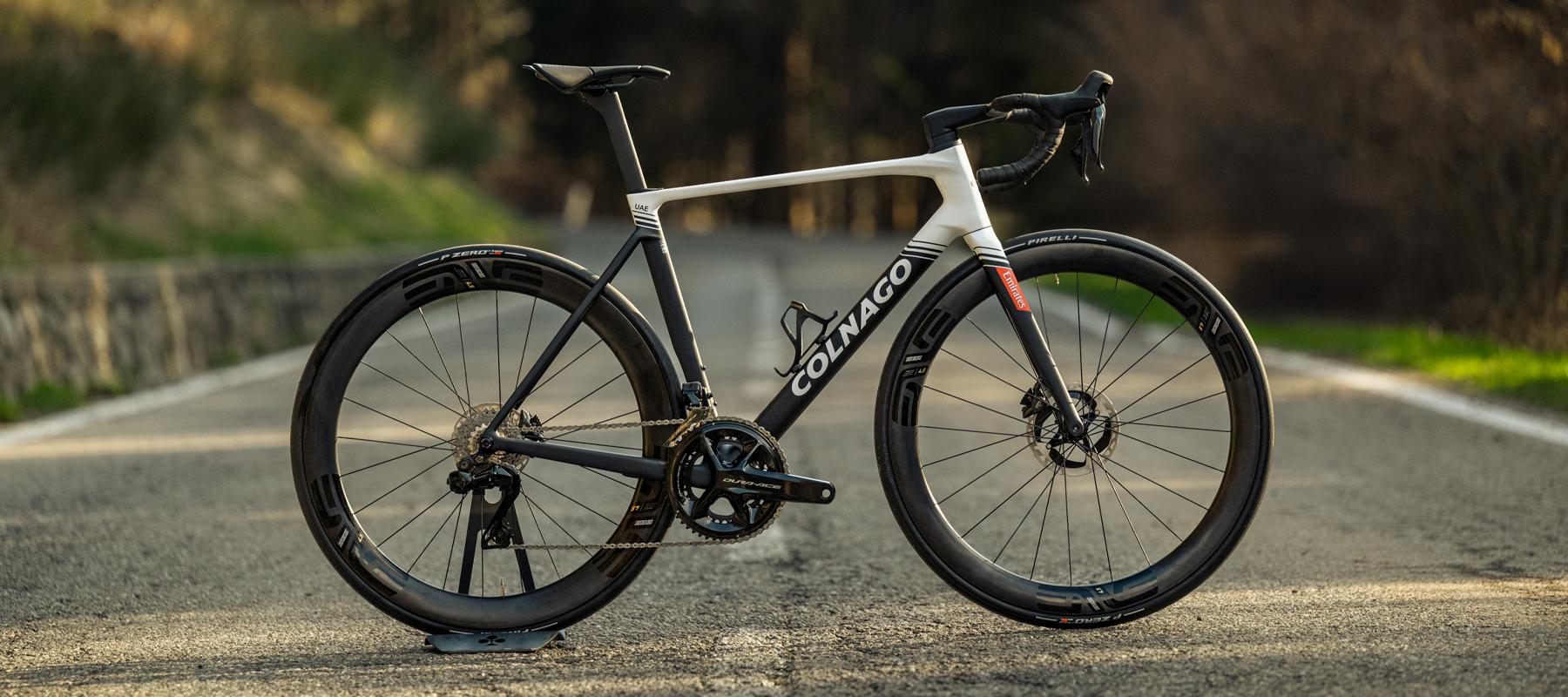Early Verdict
After 250km of riding, I'm impressed. What at first feels like slow handling quickly turns into surefooted confidence on fast descents. The more forward position is subtle but appreciated, and the ride quality is a nice balance between comfort and stiffness
Pros
- +
Stiff without being harsh
- +
Competitively light
- +
Wind tunnel data suggests improved straight-line speed
- +
Stable and responsive at speed
Cons
- -
Handling can feel too measured at slower speeds
- -
It's a very expensive bike
- -
Off-the-shelf specs follow old-fashioned sizing standards
You can trust Cyclingnews
The Colnago V5Rs is the latest iteration of the brand's lightweight, semi-aero all-rounder race bike.
It's the second bike launched by the brand this year and marks the completion of Colnago's race bike line up, which also comprises the wild-looking Y1Rs aero bike.
The V5Rs, like the V4Rs before it, will be used by the UAE Team Emirates-XRG men's team, home to world champion Tadej Pogacar, as well as the UAE Team ADQ women's team, home to current Italian champion Elisa Longo Borghini.
Its predecessor, the V4Rs, has won all manner of races at the top of our sport, including multiple Tours de France, Strade Bianche, and just last week, the Tour of Flanders. Undoubtedly that's a result of the riders' incredible power going into it, but it's hard to dispute that the V4Rs was among the best road bikes in the world.
With claims of being 143g lighter and nine watts faster (at 50km/h), the latest iteration - the V5Rs - is on paper a better bike still, and with a price tag close to €16,000 for the top spec model, you'd hope it stands up to Colnago's claims.
Full details of what's new about the bike, as well as its available spec options, can be found in our Colnago V5Rs launch story.
But here you'll find my unfiltered views on the new bike, how it compares to competitors such as the Specialized Tarmac SL8, the Factor Ostro VAM and the Trek Madone, as well as the outgoing V4Rs, and how it has fared through my initial round of testing.
A week prior to the launch, I managed to get my hands on the Colnago V5Rs. It's the Ultegra Di2 equipped model, priced at €10,800.00 (At the time of writing, international pricing is yet to be confirmed).
It is equipped with Vision's SC45 wheels, 28mm Pirelli P Zero Race tyres (there's clearance for 32mm), and the svelte, if rather angular, Colnago CC.01 one-piece cockpit.
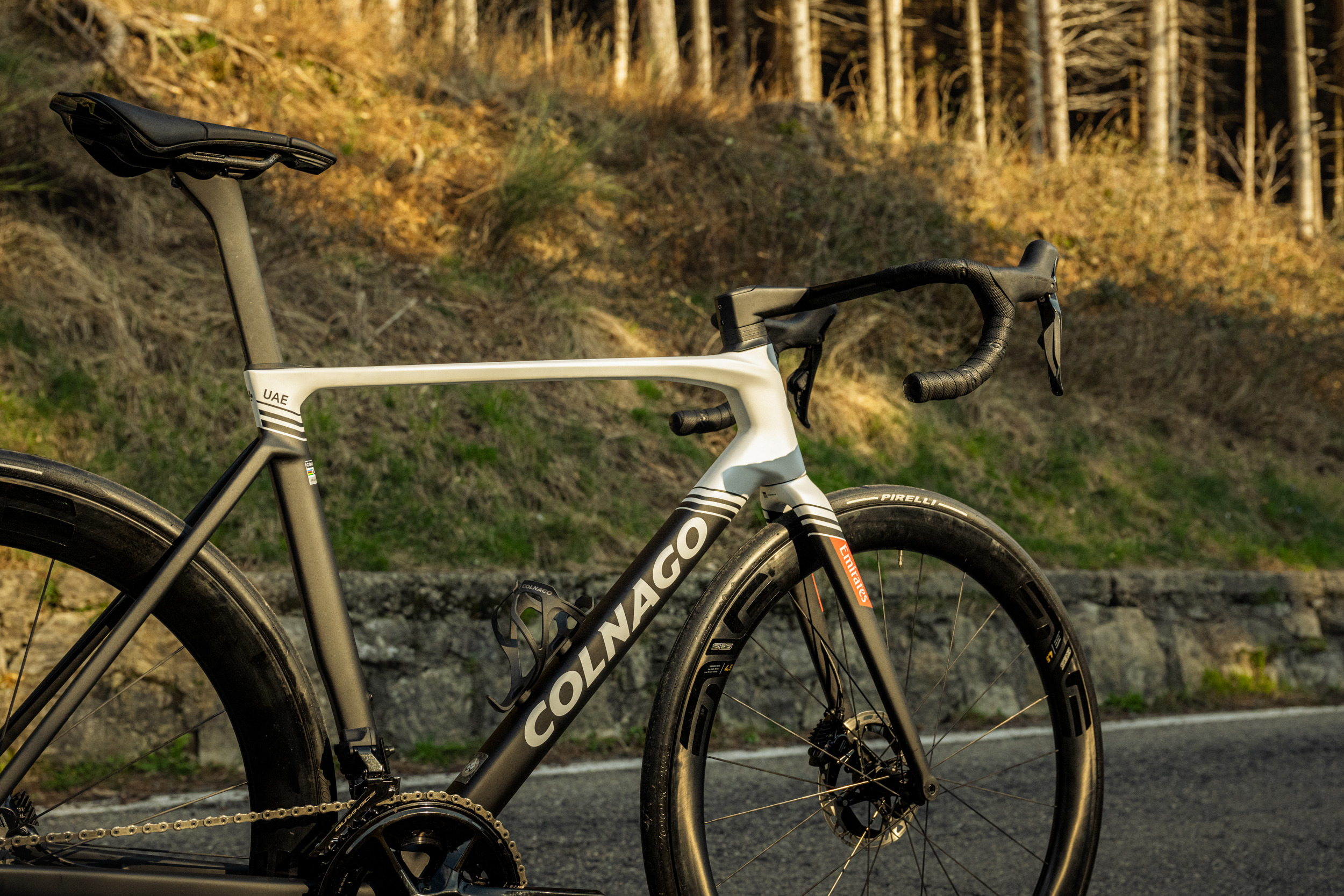
Design and specifications
Aesthetically, I'm confident that you can put any road bike into one of two categories.
Category one is reserved for the outlandish bikes. These will spark interest and intrigue from any passerby, even the general public. Think the new Ridley Noah, the Y1Rs, the Ribble Ultra SLR, and Specialized Venge Vias (remember that?). They're spaceships on wheels, and you don't have to be into cycling to want a closer look.
The V5Rs lives in category two. It's modest and understated, not one to catch the eye of non-cyclists. But in the right circles, it will still gather a crowd.
The bike I have here is finished in the UAE Team Emirates XRG colours, and while I know looks are subjective, I think it looks classy.
But this isn't a bike that's designed only to look good. There's a lot of function to match the form.
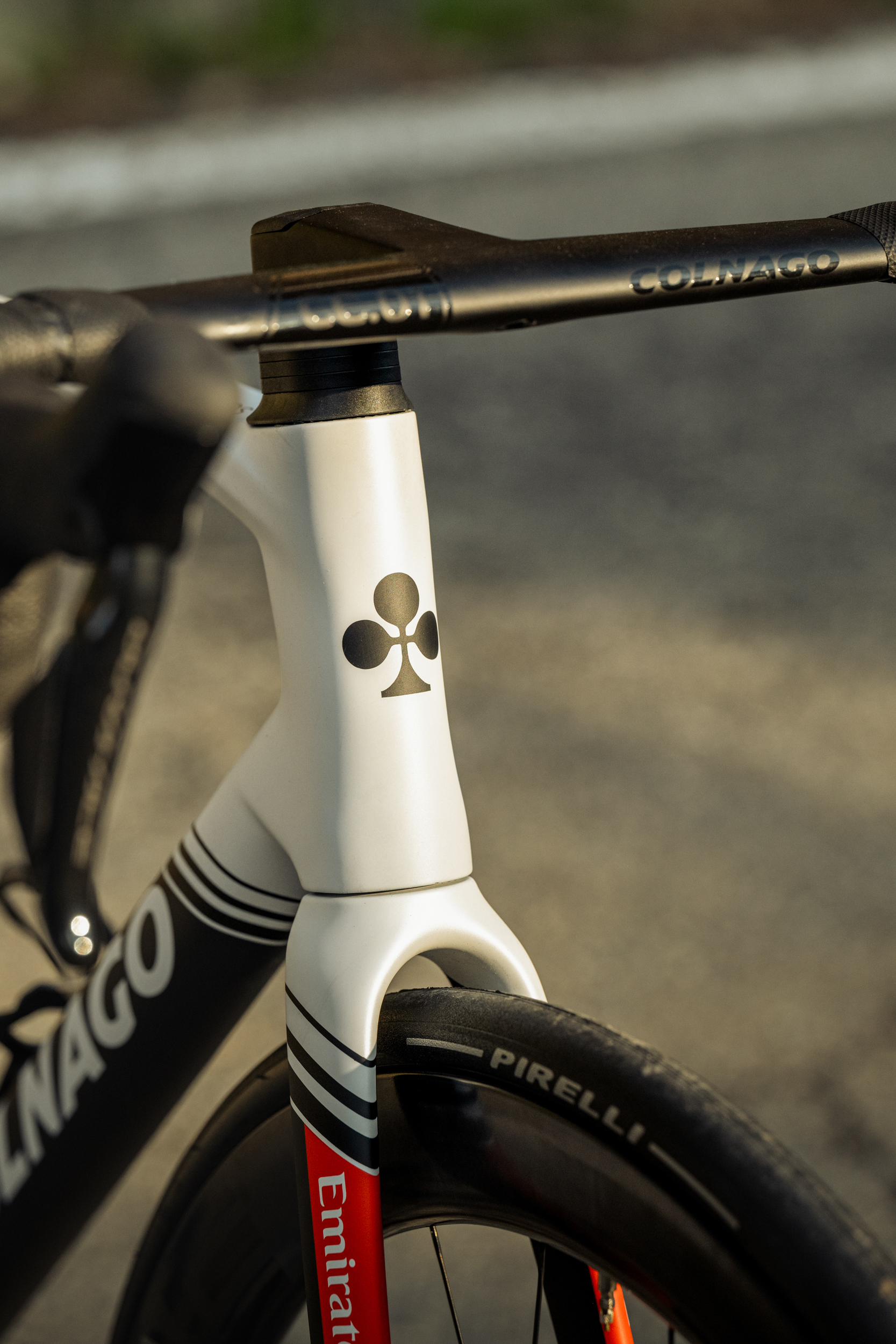
In comparison to the V4Rs, the entire frontal area of the new bike has been reduced by 13 per cent, from 28,698mm² to 24,902mm². This has been achieved through a combination of a thinner head tube, narrower fork blades, and a slimmer, deeper seatpost and seat tube, along with reshaped seat stays.
Interestingly, the junction between the seat stays and the seat tube has been moved higher. Over the past decade, many manufacturers have shifted this junction lower to improve aerodynamics and increase compliance at the rear.
However, with updated UCI regulations now permitting thinner tubes, along with advancements in carbon fibre technology and possibly the proliferation of wider tyres too, are we beginning to see a return to more traditional frame designs? While the junction is not fully aligned with the top tube, as in classic geometries, this change could signal a reversal of recent trends. Purists rejoice.
Internally, although the carbon fibre material remains the same as in the previous model, the brand has revised the laminating techniques to ensure that stiffness is retained despite the reduction in tube thicknesses.
As mentioned above, our test bike is the €10,800 model fitted with Ultegra Di2 and Vision SC45 wheels. Excluding pedals and bottle cages, it weighs 7.25kg.
Though not a perfect comparison, our recent reviews tell us that a 56cm Specialized Tarmac SL8 with SRAM Red and Roval Rapide CLX II wheels weighs 7.18kg (with pedals and bottle cages) while a Dura-Ace equipped Factor OSTRO weighs 7.23kg.
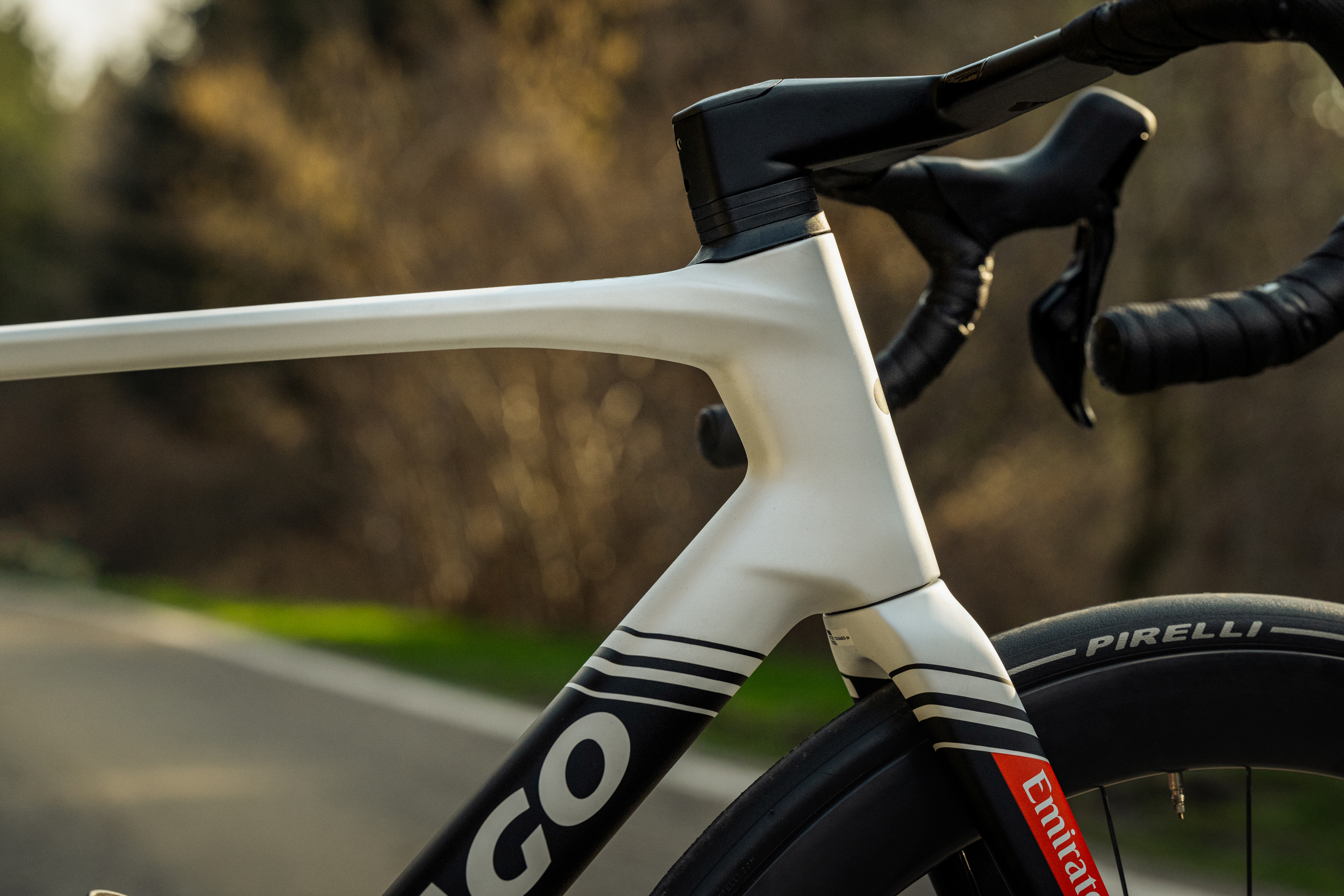
Modern considerations (mostly)
In developing the V5Rs, Colnago has evidently taken into account trends that have been influencing road cyclists – particularly racers – in recent years. .
Most notably, the company has adjusted the bike’s geometry with the aim of making the V5Rs “slightly more aggressive” and better suited to “modern riding positions”.
Despite recognising the ongoing shift towards wider tyres, Colnago has not increased tyre clearance on the V5Rs. That remains at 32mm. But has instead introduced two different forks, depending on frame size, as a way of offsetting the increase in fork trail found when using bigger tyres. Smaller frames (sizes 420 to 510) are equipped with a fork featuring a 47mm rake, while larger frames receive a fork with a 43mm rake.
In addition, all frame sizes benefit from steeper head tube and seat tube angles, and riders now also have the option of choosing an inline seatpost in addition to the standard 15mm setback. According to Colnago, this reflects the increasing preference for a more forward-oriented riding position, something particularly evident in Pogačar's riding style over recent years.
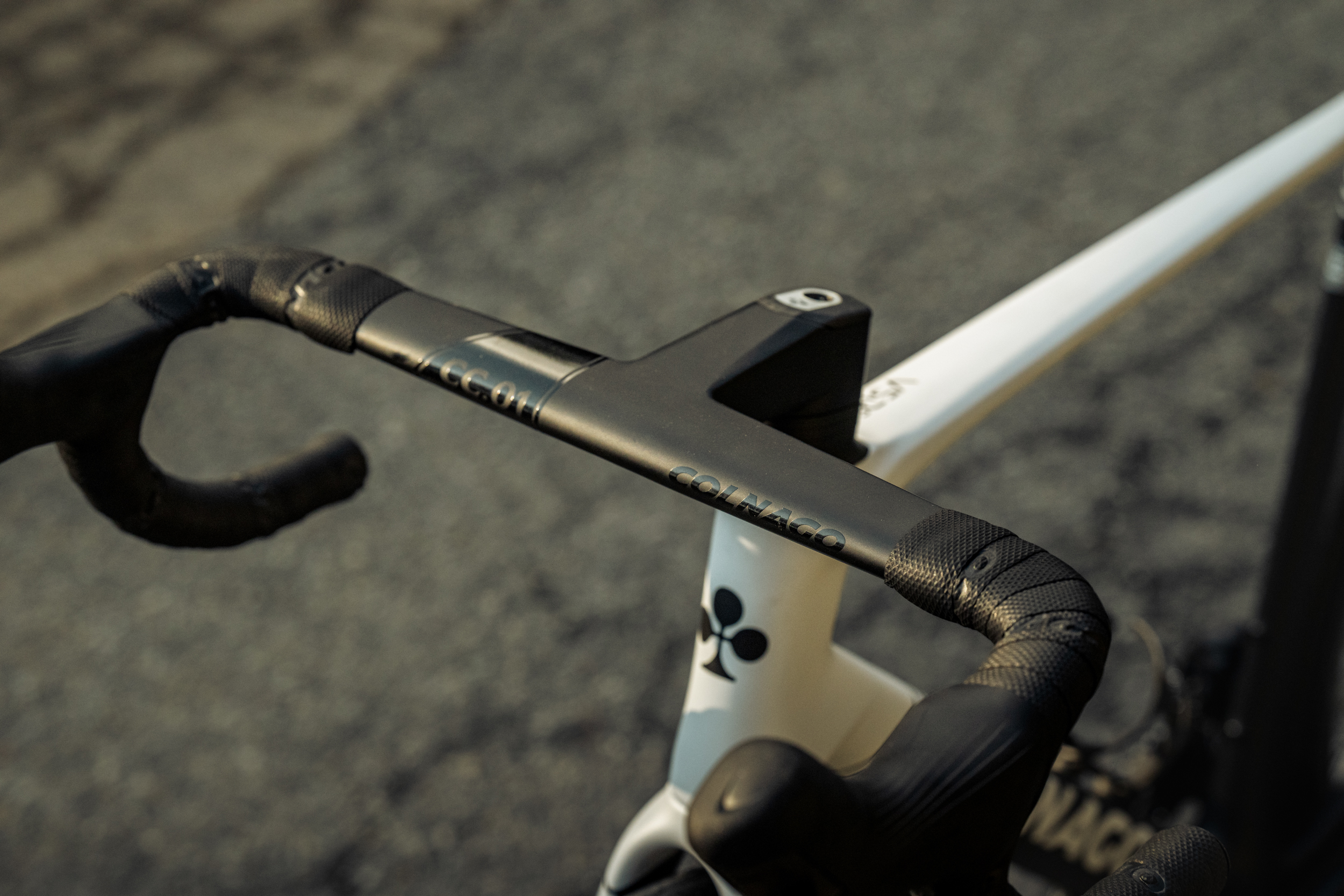
With all that said, the consideration of modern trends falls short in other areas. For example, all bikes in the V5Rs range come with Colnago's CC.01 cockpit, the same as found on the V4Rs, the C68, and others.
This is angular but svelte in appearance, with a shallow depth to the tops. Overall it offers a comfortable ride quality that absorbs road buzz well. But on my size 550 review bike, the cockpit's width is a particularly old-fashioned 42cm at the tops (measured centre to centre), flaring out to a frankly quite ridiculous 45cm at the drops.
The same applies to the crank length, which I'll concede is still a trend in its infancy and so not necessarily one for a brand to jump head-first into, but while many pro riders and amateurs alike have sought out shorter cranks, this size V5Rs is equipped with the more traditional 175mm.
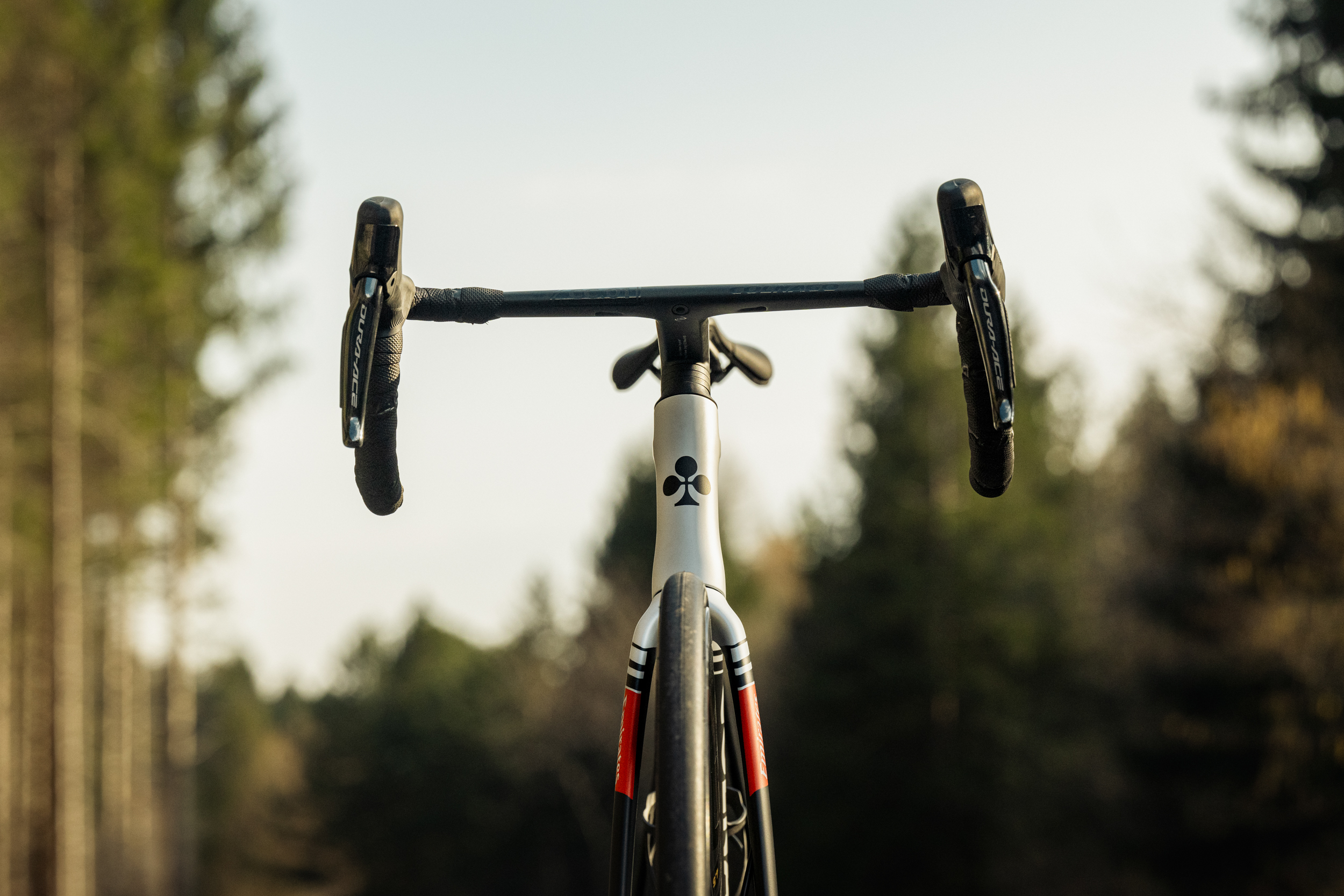
Aero gains
Overall, the V5Rs is evidently a thoroughbred, modern, lightweight race bike with aerodynamic consideration.
Specifically to the point of aerodynamics, Colnago has released a white paper of its aero testing for this against the Y1Rs. Interestingly, Colnago also tells me that testing was done on the same day it tested the Y1Rs against competitors, under the same testing conditions and using the same protocols.
Comparing both white papers together doesn't give us much new info, besides that the Y1Rs is faster than the 'best competitor', which is in turn faster than the V5Rs, and that is in turn faster than the V4Rs.
However, Colnago has promised to share more of that testing data with me to see how the V5Rs benchmarks against other bikes tested on the day. At this stage, we don't know exactly what those bikes are, and being honest, I doubt it will give us this info, but I'm told it had "most of the WorldTour aero bikes" there.
It did concede that one of the bikes on test was the Cervélo S5, though, and that it had to 3D print a new cockpit for it at the correct width since they couldn't get one in a comparable size.
I was also told it stopped short of taking what we'd typically describe as aero all-rounder bikes, since they're harder to categorise (some lean more towards low weight and others towards aero), and instead focussed on pure aero bikes.
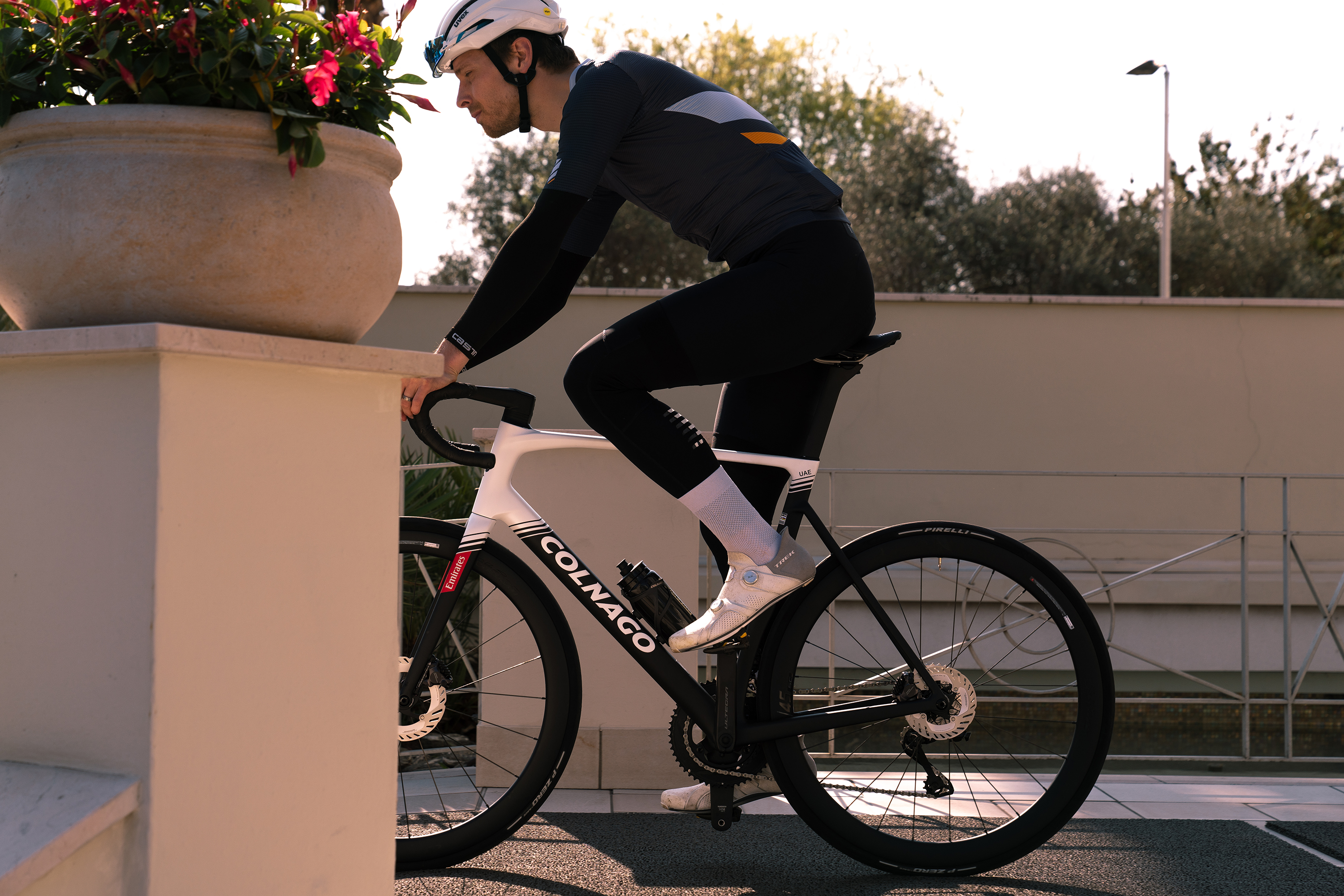
Performance
I've so far had the V5Rs in my possession for a week, and I've ridden it five times for a total of around 250km. This includes a short group ride as part of the bike's media launch, during which I threw in some max-effort sprints, a commute to and from the office, during which I threw in a short sharp hill sprint to see how it climbed at full tilt, and two 3.5-hour rides at the weekend.
Saturday's ride included zone two and a trio of hard ascents of the well-known Cheddar Gorge climb, while Sunday's was about holding a constant zone-two power.
The first takeaway is that the bike didn't skip a beat. Despite putting it together rather hastily on Saturday morning, there were no creaks or seatpost slips. You'd be surprised how common those are on first test rides, even on bikes as premium as this, so this was a nice first impression.
The handlebars were a drawback, and the cranks were marginally longer than I would typically prefer. However, since it is possible to specify components to suit individual preferences by using the custom builder available on Colnago’s website, my early impressions are very positive.
Despite those drawbacks, I found the riding position to be excellent, particularly when hunkering down into a racier position on the hoods, keeping the power on while descending.
The bike has a relatively long reach, and towards the end of Sunday’s ride – after nearly nine hours of riding over three days – I found myself wanting to shift my hands rearward onto the curve of the bars to adopt a slightly more upright position. This size 550 frame is only a few mm longer than an equivalent Tarmac SL8, but I couldn't help but feel more stretched out.
Interestingly, I found the handling slightly slower than anticipated. I had remembered Will's review of the V4Rs saying it's a bike better left for the pros, but I misremembered the reason for this as being due to overly twitchy handling. Instead, it was the opposite, and that at normal speeds (i.e., the speed most people ride at) the handling was a little slower than most competitors, but at high speeds, it came into its own. The same is very much true with the V5Rs.
The wheelbase is a compact 1005.3mm, and the trail figure of 59.5mm leans towards quicker handling, but the head angle of 72.9 degrees is comparatively slack, which makes a small but noticeable difference. At everyday speeds, the handling feels measured, perhaps even slow, but when descending twistier roads – as I did on three descents of Cheddar Gorge – there is a nice combination of stability and responsiveness at play.
With the bike's brakes set up in Euro style – the reverse of what I'm used to – I was hesitant to push the descent too hard for fear of getting my braking wrong, but I came away with the confidence that its performance would continue to improve further at higher speeds.
Value
At €10,800 for this spec, there's no denying this is an incredible amount of money.
It's probably safe to argue that if you're buying a Colnago at over €10,000, you're probably buying more than the sum of its parts, but it's reassuring nonetheless to see that equivalent spec Factor Ostro VAM would set you back more, at €11,099. However, if value for money is the primary driver, it's certainly possible to get an equivalent spec for less. A Trek Madone SLR, for example, with the same groupset and Bontrager Aeolus Pro wheels, is €8,999.
While it's likely possible to buy one in stores, Pinarello doesn't list the Dogma F off the peg in an Ultegra spec, so it's hard to compare pricing there. Likewise, the Ultegra equipped Specialized Tarmac SL8 comes with a lesser grade frame. So comparing framesets, a Dogma F frameset will set you back €6,700, an S-Works Tarmac €5,500, while the V5Rs sits in the middle at €5,940.
Early verdict
After around 250km aboard the V5Rs, I've been impressed.
There's no denying it's a capable and aggressive race bike, both in terms of its geometry and its performance on the road. It's comfortable enough for back-to-back long rides, and while there are a couple of spec choices I'd change, a paying customer would have that option, so it's hardly a negative.
It's competitively lightweight, and although it comes out heavier than the competition in the comparisons I've made above, it's worth reiterating that the spec level, fitted components and frame sizes were different. I reckon it would hold its own well under a fair comparison.
The big question that remains, however, is whether, as an amateur cyclist wanting to buy a race bike, you'd buy something with a balanced focus on weight and aero, over something all-out aero. I'd probably lean towards the latter myself, but there's no denying that the Colnago V5Rs offers a sprightly and enjoyable ride.
There's plenty more testing to come, but overall my impressions of Tadej Pogačar's 2025 race bike are positive so far.

Josh is Associate Editor of Cyclingnews – leading our content on the best bikes, kit and the latest breaking tech stories from the pro peloton. He has been with us since the summer of 2019 and throughout that time he's covered everything from buyer's guides and deals to the latest tech news and reviews.
On the bike, Josh has been riding and racing for over 15 years. He started out racing cross country in his teens back when 26-inch wheels and triple chainsets were still mainstream, but he found favour in road racing in his early 20s, racing at a local and national level for Somerset-based Team Tor 2000. These days he rides indoors for convenience and fitness, and outdoors for fun on road, gravel, 'cross and cross-country bikes, the latter usually with his two dogs in tow.
You must confirm your public display name before commenting
Please logout and then login again, you will then be prompted to enter your display name.
